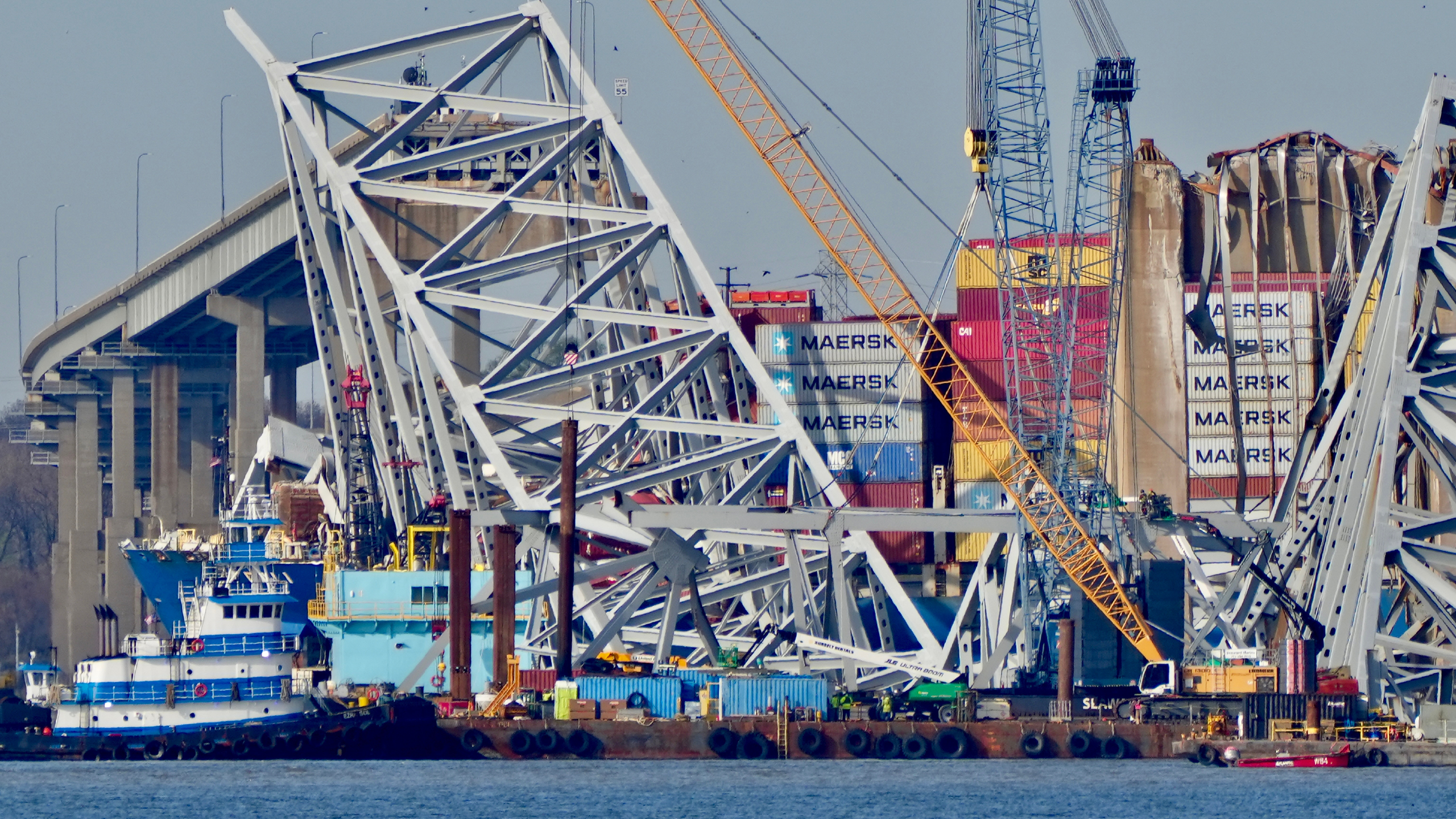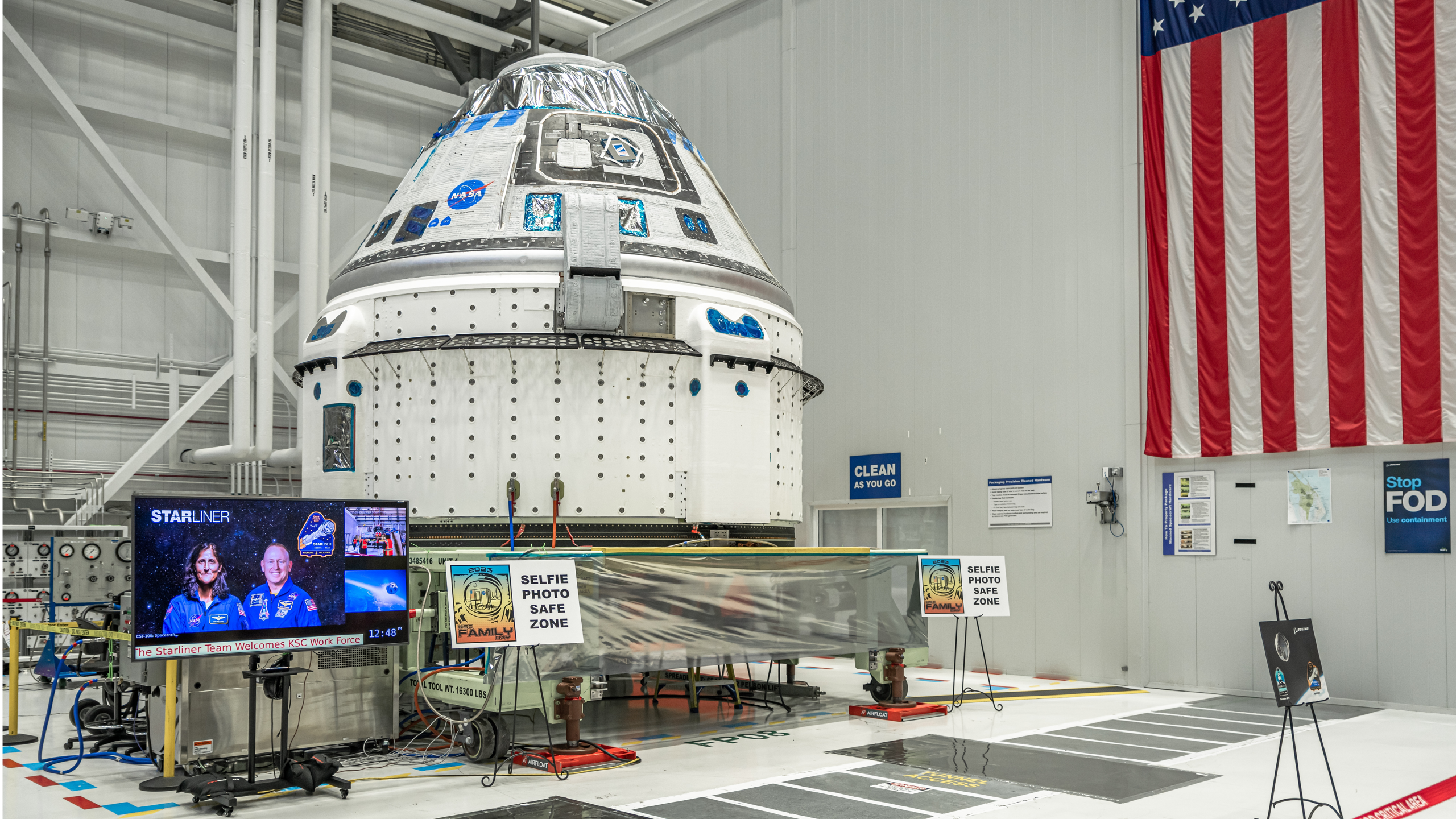The year in engineering
It’s been a turbulent year for the engineering industry – from high-profile engineering failures to some promising developments for the green transition. Here, we run through some of the stories that dominated the year in engineering, and others you might have missed.


The Ministry of Defence successfully tested a high-power laser weapon on aerial targets for the first time.
Aimed at providing UK armed forces with an accurate weapon that reduces reliance on high-cost ammunition, the DragonFire laser directed energy weapon (LDEW) was fired during trials at the MOD’s Hebrides Range off the northwest coast of Scotland. The weapon’s range is classified, but it can engage with “any visible target”, a government announcement said.
The European Space Agency sent a metal 3D printer to the International Space Station.
Designed to pave the way for manufacturing of complex metal parts in space and enable further exploration of the Moon and Mars, the European-made metal 3D printer, developed by an industrial team led by Airbus Defence and Space, set off on a resupply mission on 30 January. “This new 3D printer printing metal parts represents a world first, at a time of growing interest in in-space manufacturing,” said ESA technical officer Rob Postema.
1,000°C
The Defence Science and Technology Laboratory launched a new centre to develop materials for the most extreme environments.
The Defence Materials Centre of Excellence (DMEx) will research, create, and prototype new materials for the armed forces that can survive in the harshest conditions, such as temperatures of 1,000°C, ‘polar to tropical operations’, high impact vibrations, shock, blasts and extreme water depth.
NASA’s ground-breaking Ingenuity helicopter made its final flight on Mars, almost three years after its mission was due to end.
The US space agency announced the end of the mission on 25 January, saying that one or more of its rotors sustained damage during landing after a flight on 18 January, and that it was no longer capable of flight.

69 Megajoules
The Joint European Torus (Jet) fusion machine set a world record for energy output while demonstrating reliable generation of fusion energy.
Set shortly before the Oxfordshire facility closed in December last year, the record-breaking final experiment produced high fusion power consistently for five seconds, generating 69MJ (megajoules) using a mere 0.2mg of fuel.
Two engineers who “propelled global progress towards a net-zero future” with key contributions to modern wind turbine technology won the 2024 Queen Elizabeth Prize for Engineering (QEPrize).
Henrik Stiesdal from Denmark and Andrew Garrad from the UK were announced winners of the 2024 Queen Elizabeth Prize award on 6 February at the Science Museum in London. Stiesdal is credited with designing the three-blade turbine in 1978, sometimes described as the ‘Danish concept’. The Bladed computational design tool, pioneered by Andrew Garrad, allows engineers to model a complicated turbine system in its entirety and to predict its behaviour with the confidence needed to permit manufacture of the huge machines.
The bird flight research centre at the University of California, Davis, was announced with an almost $3m grant from the US Department of Defence.
The new centre will use motion capture and photogrammetry – which uses photography to determine the distance between objects – to image birds in flight and create 3D models of the wing shapes, to inform the design and capabilities of the next generation of uncrewed aerial systems, or UAS.


The Francis Scott Key Bridge in Baltimore, Maryland, collapsed after being struck by a container ship.
“While the exact causes leading to this unfortunate tragedy remain to be seen, loss of propulsion of the ship seems to be a likely one,” Jin Wang, professor of marine technology at Liverpool John Moores University, told Professional Engineering. “When the propulsion power is lost in a ship, the manoeuvrability is lost because propellers, thrusters, et cetera would not be operational.”
48,388
BEVs sold
Sales of new battery electric vehicles (BEVs) were at their highest ever levels in March with 48,388 sold in the UK, according to figures from the Society of Motor Manufacturers and Traders (SMMT). Their market share dropped compared to March 2023, however, raising concerns about the transition from fossil fuel vehicles.
A dedicated innovation centre for floating offshore wind opened in Aberdeen.
Described as a “world first” by the Offshore Renewable Energy (ORE) Catapult, the centre was opened by then Scottish first minister Humza Yousaf. The Catapult’s £9m National Floating Wind Innovation Centre (Flowic), delivered in collaboration with local project ETZ (Energy Transition Zone), is designed to “supercharge” the development of floating offshore wind technology in the UK, with funding from both the Scottish government and Innovate UK.

6x more energy storage
A report from the International Energy Agency revealed that the world needs a sixfold increase in global energy storage from batteries to enable the world to meet 2030 targets.
The storage method has already made great strides in recent years, the report says – growth in batteries outpaced almost all other clean energy technology in 2023, with a 130% increase in power sector deployment. This was driven in part by a fall in cost of more than 90% in 15 years, as well as innovations and supportive industrial policies.
Budget airline WizzAir announced plans to use jet fuel made from human waste, thanks to an agreement with a sustainable aviation fuel (SAF) company that has announced plans for a world-first production facility.
Bristol firm Firefly Green Fuels announced plans for the refinery at a press conference in London. The commercial scale plant in Harwich, Essex, will convert sewage sludge into roughly 43,000 tonnes of SAF per year.
Research from the University of Sheffield revealed that replacing plastics is likely to cause increased greenhouse gas emissions.
The study, published in April in collaboration with the University of Cambridge and the KTH Royal Institute of Technology in Sweden, compared plastic products against alternatives in 16 applications. In 15, plastics resulted in lower emissions. In each of the applications, from packaging and furniture to construction, automotive and textiles, the ‘next-best’ alternatives were considered – paper, aluminium, steel, glass, concrete, ductile iron, copper, fibreglass, wood, wool and cotton.


Elon Musk’s brain interface company Neuralink hit an unexpected setback, when threads from its first device to be implanted into a human subject partially detached from their brain.
Neuralink is just one company trying to build better brain implants. BCIs have allowed quadriplegic patients to control computers, neuroprostheses and exoskeletons. The technology has increasingly grown more sophisticated in recent years, and an injection of cash into the commercialisation of the technology promises leaps and bounds ahead.
£37.6m
A new £37.6m digital twin facility will enable “open innovation” between aerospace, marine and other engineering sectors, according to one of its experts. Led by the government-backed Digital Catapult, the UK Digital Twin Centre was announced in May. It is due to open in Belfast, aimed at accelerating industry’s adoption of digital twins – virtual models of physical objects or systems that integrate real-time data.
A new project set out to enable carbon capture success, using AI tools to fight one of the most pressing technical challenges for the process.
Recovering the solvent – which binds with carbon dioxide (CO2) to prevent it reaching the atmosphere – creates a huge energy demand, said Professor Peter Cummings from Heriot-Watt University in Edinburgh. The ECO-AI project set out to tackle that ‘parasitic energy cost’ and accelerate the carbon capture development process.

Euro 2024 kicked off in Germany – and there was some hidden engineering on the pitch.
Aimed at helping match officials make accurate decisions quicker, connected ball technology uses a suspension system in the centre of the ball, holding and stabilising a 500Hz inertial measurement unit (IMU) motion sensor. Designed to provide “unprecedented insight into every element of the movement of the ball”, the sensor allows video assistant referees to identify every individual touch of the ball – including from defenders’ hands.
The UK general election kicked into gear, with Labour announcing a raft of plans for shaking up the UK’s railway network.
The plan would be part of “the biggest reform of our railways for a generation,” shadow transport secretary Louise Haigh said in a speech. “It marks basically the first major reversal of a Tory privatisation,” said rail expert Christian Wolmar. “This is a statement of intent to say: ‘We don’t agree with Andy Bagnall of Rail Partners, who says this is going to cost money, be a disaster, and we need the private sector.’”
In June, OpenAI announced that its ChatGPT generative AI model would soon be integrated with Apple, bringing it to iPhones and Macbooks all over the world.
We recently quizzed engineers on their hopes and concerns over AI in the industry. Most engineers feel positive about the introduction of AI in the industry and believe it could help solve some of humanity’s biggest challenges. But the paths to success are riddled with danger, respondents say – and many in the profession could face losing out entirely.


Labour won a landslide victory in the UK general election and announced big changes to energy, education, skills and planning policies that could affect engineers.
The Labour manifesto included an end to the ‘de facto’ ban on offshore wind, more detail on Great British Energy, a publicly owned company that will invest in clean energy projects, and a comprehensive strategy for post-16 education.
At Farnborough Air Show, rocket companies set out their plans for same day global deliveries.
Aiming to take advantage of new technology and expanding spaceport infrastructure worldwide, a panel – led by Global Spaceport Alliance chairman Dr George Nield – said high-speed, long-distance transportation will carry cargo through the upper atmosphere before ultimately shuttling people as well. “I strongly believe that the ability to fly from one point on Earth to the opposite side of the planet in just an hour or two is going to be a tremendous gamechanger, in terms of both national security and economic competitiveness,” said Dr Nield.
$259bn
UK manufacturing output was worth $259bn in 2022 according to trade organisation Make UK, the latest year that data is available for. That placed the country 12th in worldwide rankings, the first time since 2012 that it is out of the top 10. The fall down the rankings came as Mexico climbed to seventh on the back of an already strong manufacturing base, and Chinese investments made during the Trump presidency to counter tariffs. Russia also climbed to eighth on the back of substantially increased defence production, while Taiwan came ahead of the UK thanks to its global dominance of semiconductor manufacturing, where demand has risen substantially in recent years.
More aircraft flew than ever before at this year’s UAS Challenge thanks to increasingly enthusiastic and engaged participants, according to a key member of the competition team.
The event’s 10th anniversary was “the best we’ve had”, said chief scrutineer Rod Williams to Professional Engineering, despite some challenging weather at BMFA Buckminster in rural Leicestershire in early July. 24 teams took part, with 16 successfully flying their unmanned aerial systems (UAS) in simulated humanitarian missions.
There was an increased focus on driverless cars at the Formula Student competition in July, enabled by a grant from the Centre for Connected Autonomous Vehicles (CCAV), which funded two more shared driverless cars, and re-engineering of two existing ‘dedicated vehicles’.
The four IMechE cars were controlled by autonomous navigation and driving systems developed by the students.

The Paris Olympics came to an end and Team GB picked up an impressive haul of medals, including three in the triathlon, where engineers from the UK Sport Institute helped optimise their trisuit.
Focused on sports where there are opportunities to improve the chance of winning medals, or to climb higher up the podium, the UKSI’s 18-strong innovation team includes engineers, bio-mechanists and data scientists.
In August, the Guardian reported that 15 national heat records had been broken in 2024, making it one of the hottest years in recorded history.
The climate emergency is affecting all of us. But it’s impacting manufacturers as much as any sector. “Manufacturers risk being prime casualties of climate change, as commodities, ports, infrastructure, and factories fall victim to extreme weather disruption the world over,” Gemma Thompson, senior consultant for strategy and growth at Proxima consultancy, told us.
1.9
fewer breakdowns per 1,000 cars
There are 1.9 fewer breakdowns for every 1,000 EVs than internal combustion engine cars – as we reported over the August bank holiday, which was the busiest on the roads since records began, according to the RAC. Earlier this year, ADAC (the General Germany Automobile Club) released figures showing that recently-purchased EVs were less prone to breakdowns than petrol or diesel cars of the same age. For every 1,000 vehicles registered in 2020, EVs had 1.9 fewer breakdowns than combustion engines. For cars registered in 2021, EVs increased this lead to 3.6.
Students up and down the country got their GCSE and A-Level results in August, and we reported on the growing interest in STEM subjects being studied at A-Level.
“It is especially encouraging to see STEM subjects featuring prominently among the top 10 most popular A-level subjects this year,” said IMechE’s skills and policy lead Lydia Amarquaye. “This reflects a growing interest and recognition of the importance of science, technology, engineering and mathematics in shaping our future. The skills and knowledge gained from studying these subjects are critical to driving innovation and solving the complex challenges of tomorrow.”


On 6 September, a super typhoon swept through the South China Sea, putting the world’s largest single-capacity floating wind turbine – newly installed just weeks earlier – at risk.
But the unique design, consisting of two heads instead of the conventional single tower, meant the turbine was able to cope with the 139mph winds. It could open up a new, two-headed future for wind power.
Flu jab season kicked off, with millions visiting their doctors or pharmacy for the dreaded needle in the arm.
But that could one day be a thing of the past, as engineers are working on innovative needle-free solutions for delivering vaccines, including ultrasound and ‘jet injectors’.
Boeing’s Starliner capsule returned from the International Space Station – without the two astronauts it was meant to bring home. Butch Wilmore and Suni Williams were left stranded in orbit due to technical problems with the capsule’s thrusters, and will be brought back by a SpaceX capsule early next year.
342,817
Lego pieces
For most people, the most complex Lego builds we ever get to might be a house, a castle – maybe the Millennium Falcon, if we’re lucky. For Jonathan Beaumont, it was a life-size, drivable McLaren sports car. That opportunity came as part of a project between the Danish construction toy company and the luxury automotive firm. The work reached a successful conclusion in September, when McLaren Formula 1 team driver Lando Norris drove the car – made of 342,817 Lego parts – around the Silverstone track. Celebrating the launch of the 1:8 scale Lego Technic P1 set, the full-size version also used components from the engineering-focused product line.

The government announced a “new era for the clean energy industry” with £21.7bn for two carbon capture sites in North West and North East England.
The investment, spread over 25 years, will fund carbon capture, usage and storage (CCUS) deployment at the East Coast Cluster in Teesside (backed by oil companies including BP and Equinor) and HyNet North West in Merseyside. The two clusters aim to decarbonise heavy industry by capturing carbon emissions before they reach the atmosphere. Other projects will include power generation with carbon capture and low-carbon hydrogen production.
SpaceX pulled off a remarkable engineering achievement when it caught a Super Heavy booster rocket returning to Earth with two ‘chopstick arms,’ in what some called ‘our generation’s man on the Moon moment’.
“This is a day for the engineering history books,” said SpaceX senior manager and webcast host Katie Tice. Aimed at demonstrating Starship and Super Heavy’s ‘fully and rapidly reusable design’, it is hard to overstate the challenges that were overcome to achieve the feat, the equivalent of catching a 22-storey building.
Hurricane Milton swept through the eastern United States, killing more than 32 people and causing billions in damages to property and infrastructure.
Earlier in the year, engineer and disaster recovery expert Holli Kimble told us about her work for React Disaster Response, which is trained to respond to disasters in the UK and around the world. In 2019, she was deployed to Mozambique following the devastation of cyclone Idai. Her agile team of non-specialists was able to access areas that had not yet been visited, and to conduct a “full range of needs assessments,” reporting back to the UN.
4.5m tonnes
An estimated 4.5m tonnes of carbon emissions were produced by the Rio 2016 Olympic and Paralympic Games, according to an IMechE report published in October – one-and-a-half the total emissions of the country of Fiji in 2022. “Engineering better sports venues: Designing for athletes, spectators and the environment” explores the role of engineers in developing sustainable and inclusive sports venues, with a particular focus on the large stadiums used for elite sport.


$300bn
Fractious negotiations at the Cop29 climate conference in Azerbaijan resulted in developed nations pledging at least $300bn (£237bn) a year for climate change adaptation.
Some researchers are already busy preparing for a future of higher temperatures, investigating the likely risks and opportunities of climate engineering, also known as geoengineering. From spraying reflective particles into the upper atmosphere to installing giant mirrors in space, the controversial techniques would require some innovative engineering.
Storm Bert caused chaos as it surged into the UK, bringing high winds, heavy rain and snow on higher ground.
Widespread flooding caused disruption on the rail network – but, as the climate emergency causes more frequent extreme weather, it could become the new norm. Thankfully, rail industry experts are already busy preparing for a world of more extreme weather, using digital twins and related tools to make the network more resilient.
Stellantis announced the closure of the Vauxhall plant in Luton, threatening 1,100 jobs, and Ford announced 800 job cuts in the UK over the next three years. Both moves were linked to the electric vehicle (EV) transition, which were showing some signs of faltering despite positive figures earlier in the year.
The Society of Motor Manufacturers and Traders (SMMT) and other experts called on the government to reassess elements of the zero emission vehicle (ZEV) mandate, which sets out plans for all new cars and vans to be zero emission by 2035.

Jaguar unveiled a new concept EV after a controversial rebrand.
But the company has also been working to change how it does things behind the scenes as parent company Jaguar Land Rover preps for an all-electric future – it has reconfigured its factory in Halewood, and in September announced a battery recycling project that aims to reduce the need for newly-mined minerals, cutting carbon emissions from EV cell production by 60%. The project, involving JLR and UK critical metals supplier Altilium, will produce and validate EV battery cells using materials recovered from batteries that have reached end-of-life.
South Western Railway – which runs services from London Waterloo to the south and west of England – will be the first rail franchise to be nationalised under the Labour government, it was announced in early December.
Others are set to follow as the government plans to let the privatised franchises expire and bring rail companies back into public ownership. Companies have responded by slowing down their activities – more than half (51%) of rail businesses plan to freeze or slow down recruitment in response to a predicted hiatus in rail work over the next year.

You're reading a brand new digital publication from the team at Professional Engineering, made exclusively for IMechE members and available on all devices. We'd love your feedback: let us know what you think at profeng@thinkpublishing.co.uk









































